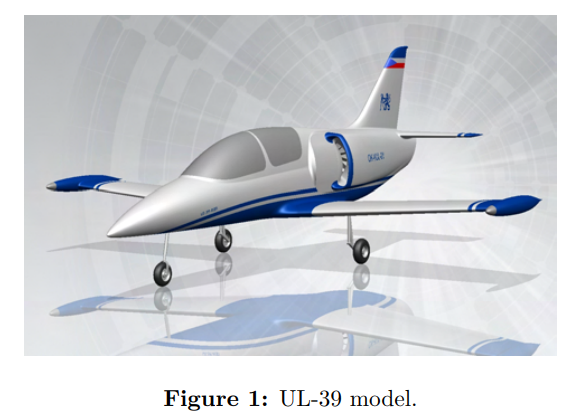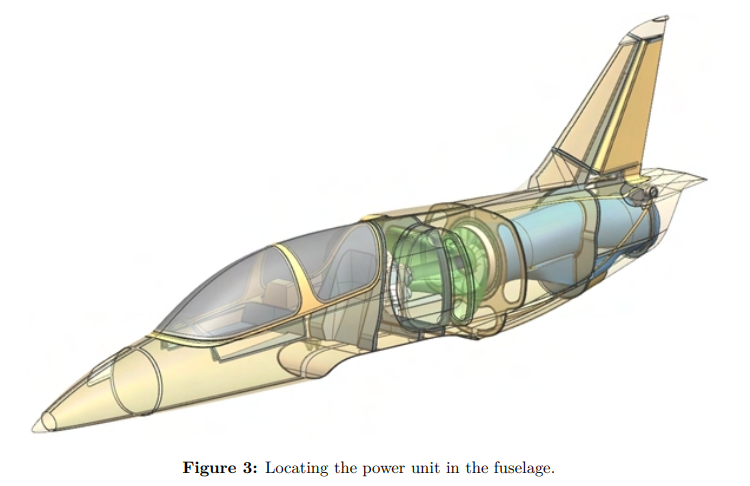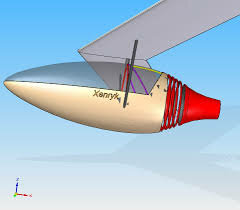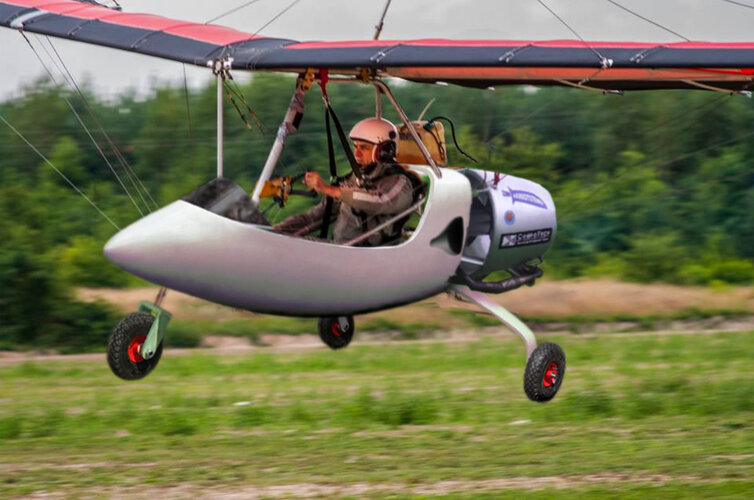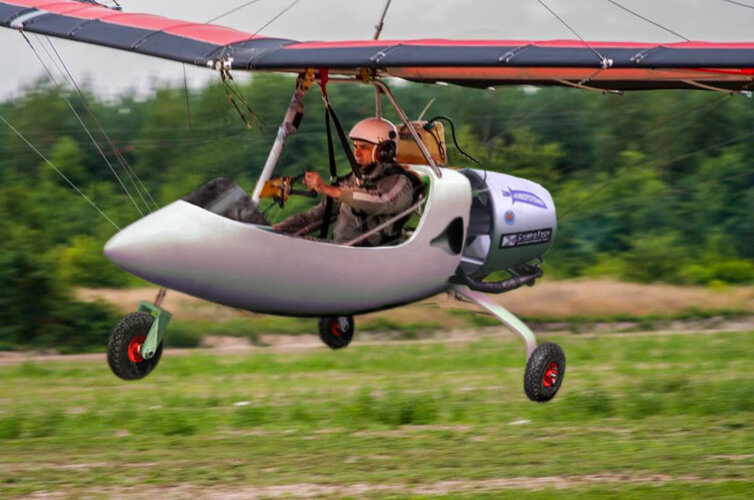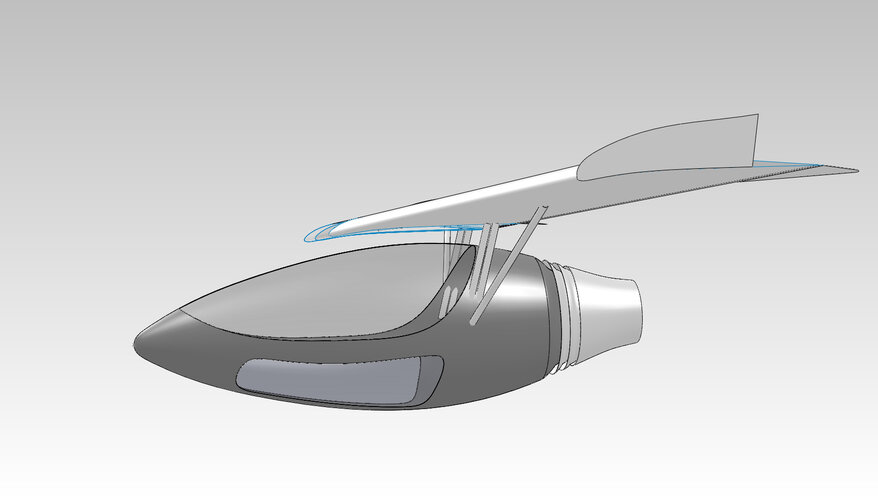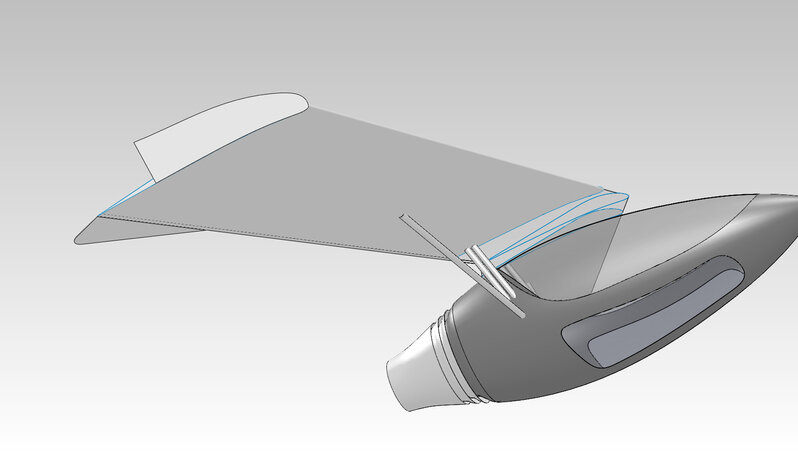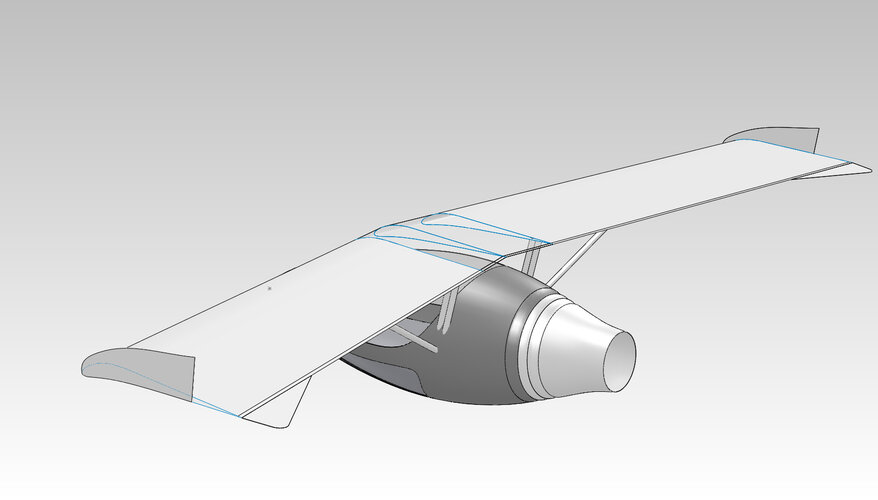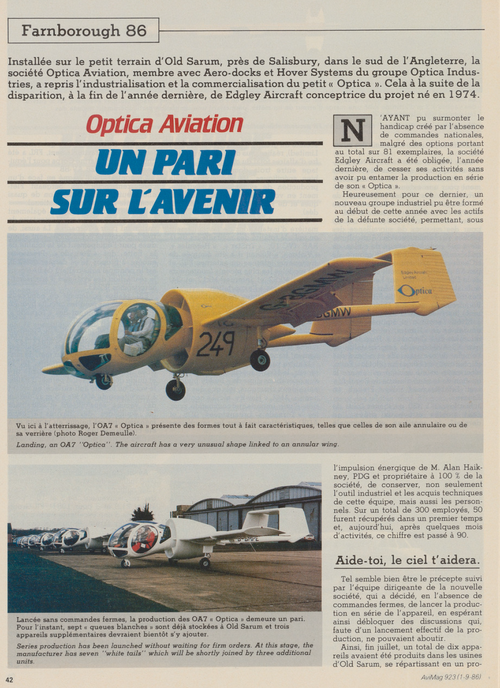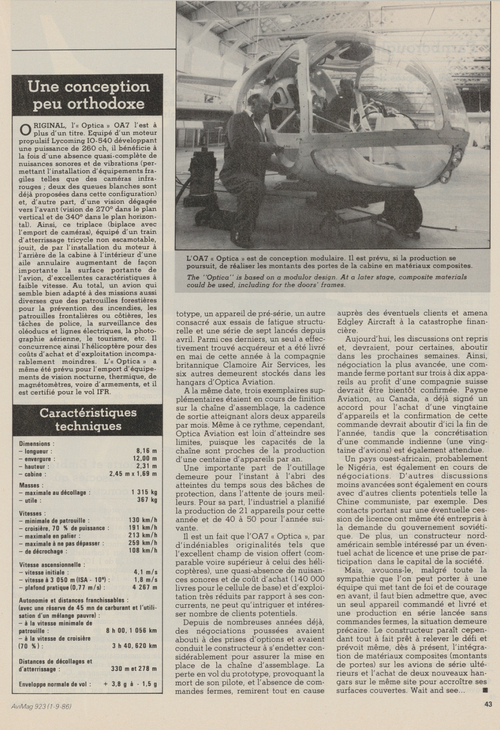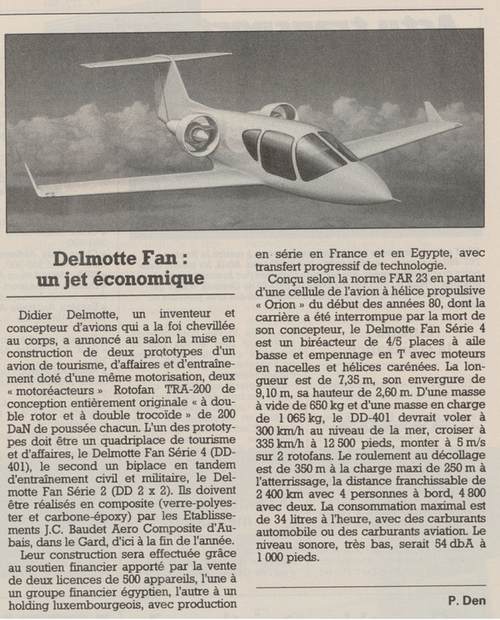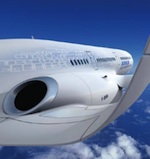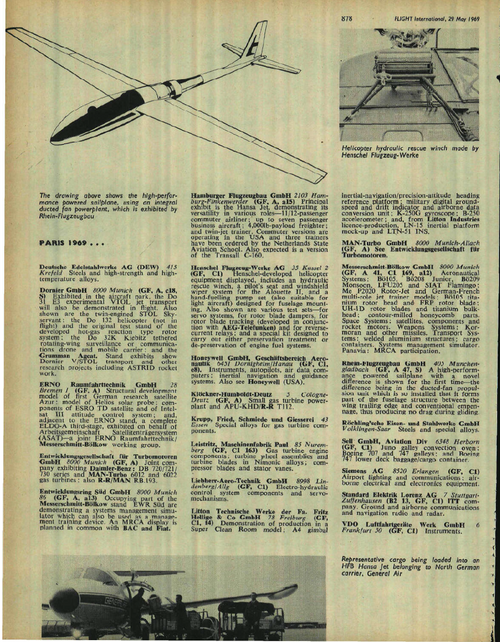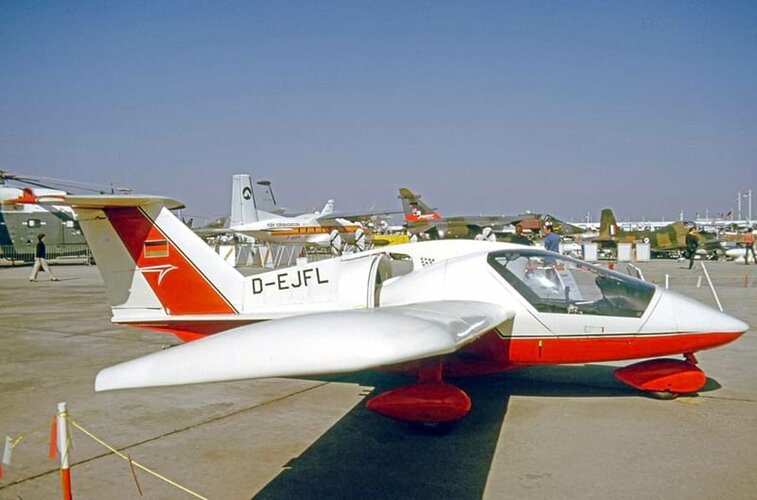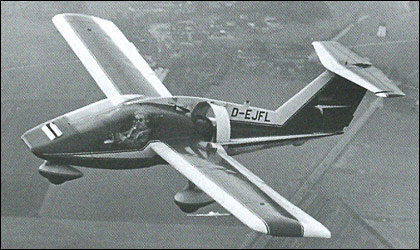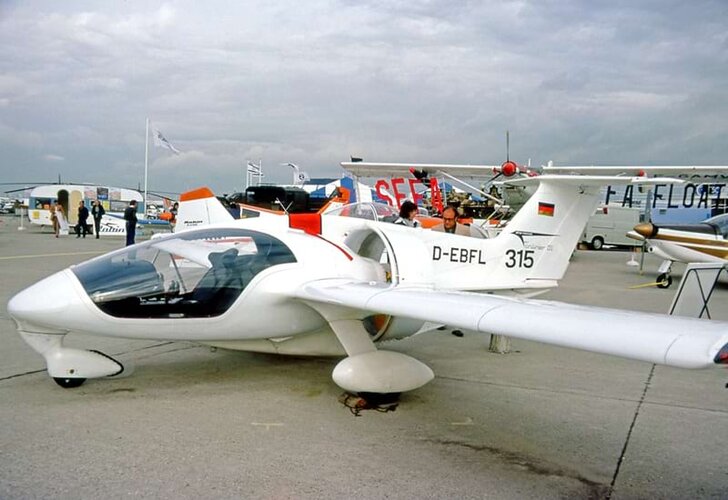par Delmotte
4 mai 2014 à 20 h 43 min
L’avion du futur s’imagine aujourd’hui
Le présent commentaire a pour objet d’offrir des solutions concrètes qui soient simples, économiques, sécuritaires et silencieux pour les transports aériens du futur.
DELPLANE est un brevet générateur d’aéronefs révolutionnaires :
Le TaGV (lire TaGéVé) un mode de « Transport aérostatique à Grande Vitesse » grâce à l’énergie d’origine photovoltaïque. Sorte de vaisseau aérien, il est d’un concept simple et sa construction devrait être très économique. Il est 100% écologique et 100% sécuritaire et conviendrait très bien pour les lignes aériennes intérieures en Afrique, en Chine, en Inde, en Russie, en Australie ou en Amérique du Sud).
Communiqué 1 modifié (existe aussi en anglais)
« Didier Delmotte, citoyen français, ancien Président fondateur et propriétaire de la compagnie Air Littoral qu’il a créée en France en 1972, dirigeant un bureau d’études indépendant, vient de déposer un brevet en Suisse avec extension internationale et a l’honneur de vous présenter un nouvel aéronef révolutionnaire dont l’une des nombreuses applications est un dirigeable à la fois aérostat et avion nommé AEROSTAT-PLANE qui s’inscrit entièrement dans une politique de développement durable, avec structure en bois (spruce aviation) et propulsion électrique (ou hybride) avec 1 à 3 ha de surface photovoltaïque selon les modèles.
De par sa forme rectangulaire et profilée d’aile d’avion, son aérodynamisme est tel qu’il peut voler avec ou sans hélium en fonction de la puissance installée à bord. Selon les modèles et la motorisation, électrique ou hybride avec turbopropulseurs, les capacités de charge sont de 100 à 300 tonnes sur 1.800 à 24.000 km à des vitesses allant de 185 à 555 km/h.
L’AEROSTAT-PLANE ignore le crash, il est donc de ce fait le véhicule, toutes catégories, le plus sûr au monde. Cette particularité, unique, facilitera grandement l’automatisation totale de ce type de vaisseau aérien, tel un drone géant radio-télécommandé.
Didier Delmotte précise que de ce dirigeable, il a été développé une version « bombardier d’eau » pouvant larguer jusqu’à 300 tonnes de liquides, ce qui pourrait résoudre tous les problèmes d’incendie dans le monde, ainsi qu’une version « gros porteur » pouvant transporter 1.400 personnes sur 6.000 km avec un confort et une sécurité incomparables, et ce à des prix défiants toute concurrence.
Le projet pourrait générer dans le monde, plusieurs millions d’emplois sur vingt ans. Didier Delmotte ajoute que tous les pays du monde peuvent fabriquer L’AEROSTAT-PLANE, car il s’agit de techniques de fabrication simples et de certifications existantes FAR et/ou JAR accessibles à tous.
Il est précisé que le financement du projet est assuré par la Fondation Indépendante du Développement Durable Didier Delmotte (FIDD Foundation) qui recherche des partenaires industriels «avionneur» qui disposeront d’une concession industrielle exclusive gratuite (licence) pour une Région, un Pays ou un Etat déterminé ainsi qu’une assistance technique.
Documentation technico-commerciale préliminaire illustrée (en français) sur demande.
Contacts :
didier.delmotte2@orange.fr 0033139977159 et 0033675575142
This comment has the aim of offering concrete solutions which are simple, economic, safety and without noise for air transport of the future thanks to the photovoltaic one.
TaGV (said TaGéVé) is an aerostatic means or “Transport aérostatique à Grande Vitesse” thanks to energy of photovoltaic origin. Air vessel, it left is a concept and a construction very economic, 100% ecological and 100% safety, and would be appropriate very well for the interior air lines in Africa, in China, in India, in Russia in Australia or South America.
Official statement 1
Didier Delmotte, French citizen, former President founder and owner of the company Air Littoral that it created in France in 1972, directing an independent engineering and design department, have just deposited a patent in Switzerland with international extension and have the honor to present a new revolutionary aircraft to you of which one of the many applications is an airship at the same time airship and named plane AEROSTAT-PLANE which fits entirely in a durable policy of development, with structure in wood (spruce aviation) and electric propulsion (or hybrid) with 1 to 3 ha of photovoltaic surface according to models.
From its rectangular and shaped shape of wing of plane, Its “aérodynamisme” is such as it can fly with or without helium according to the power installed capacity on board. According to the models and motorization, electric or hybrid by turboprops, the load capacities are 100 to 300 tons out of 1.800 to 24.000 km at speeds going from 185 to 555 km/h.
AEROSTAT-PLANE be unaware of the crash landing, it is thus of this fact it vehicle, all categories, more safe in the world. This characteristic, single, will largely facilitate the total automation of this type of air vessel, a such remote-controlled safely giant drone .
Didier Delmotte specifies that of this airship, it was developed a version « water bomber » being able to release up to 300 tons of liquids, which could solve all the problems of fire in the world, as well as a version « large transport aircraft » being able to transport 1.400 people out of 6.000 km with an incomparable comfort and a safety, and this at defying prices any competition.
The project could generate in the world, several million employments over twenty years. Didier Delmotte adds that all the countries of the world can manufacture the AEROSTAT-PLANE, because they are a simple technique of fabrication and existing certifications FAR and/or JAR accessible to all.
It is specified that the financing of the project is ensured by the Foundation Independent of the Durable Development Didier Delmotte (FIDD Foundation) which seeks industrial partners “airframe manufacturer”. Free exclusive industrial concession for a given country.
Preliminary technical-commercial documentation illustrated (in French) on request.
Contacts:
didier.delmotte2@orange.fr 0033139977159 and 0033675575142
L’AEROSPATIAL, suggestion pour les vols hypersoniques (silencieux pendant plus de 75% du temps de vol), suborbitaux et orbitaux, et suggestion pour le remplacement de Concorde.
Communiqué 2 (en Français)
Didier Delmotte, Président fondateur de la compagnie AIR LITTORAL déclare :
Le brevet DELPLANE est un « fuselage volant » dont l’une des nombreuses applications est d’être un aéro-astronef, c’est-à-dire un aéronef à la fois aéronautique et astronautique.
Cet aéro-astronef nommé AEROSPATIAL est ainsi développé :
Une importante surface alaire rectangulaire (plus de 1.000 m²) en forme de profil d’aile d’avion et une pluralité de turboréacteurs sont agencées pour permettre à l’appareil d’atteindre à vitesse ascensionnelle élevée, c’est-à-dire en peu de temps, une altitude préliminaire de 35 à 50 km.
Un ou plusieurs moteurs-fusées triple corps sont agencés sur l’extrados et à l’intrados de l’aéro-astronef : un corps accélérateur à l’arrière (1), un corps pour la décélération à l’avant (2) et un corps consistant en un réservoir de propergol gélifié par MBDA et non polluant au centre (3) du moteur-fusée, non représentés en détails sur les dessins pour des raisons de confidentialité. Il est d’ailleurs aisé d’installer, si besoin est, plusieurs moteurs-fusées de ce type, vu l’importance de la surface disponible sur l’extrados comme à l’intrados de l’aéro-astronef en question. Ces moteurs-fusées sont rechargeables en vol, car escamotables de la même façon que le sont les atterrisseurs (procédés brevetés).
Chaque moteur-fusée est agencé pour propulser progressivement l’AEROSPATIAL de l’altitude préliminaire aux altitudes et vitesses requises qui permettront soit un vol hypersonique longue distance, soit un vol suborbital, soit une mise en orbite ou soit l’installation d’un nano-satellite.
Pour le retour sur Terre, des rétrofusées d’un modèle connu sont agencées pour donner une incidence d’autofreinage ou bien la décélération est obtenue par combustion de propergol gélifié MBDA comme indiqué ci-dessus ou par tout autre moyen approprié connu, afin que l’aéro-astronef obtienne une vitesse et un positionnement compatibles avec un vol normal lors d’un retour en atmosphère terrestre en vue d’une approche et d’un atterrissage classiques au moyen des turboréacteurs (9).
A noter que l’aéro-astronef n’est polluant et bruyant que lors des phases de décollage et de montée rapide ainsi que lors des phases d’approche et d’atterrissage, c’est-à-dire moins d’un quart du temps de vol.
Il est précisé que le financement du projet est assuré par la Fondation Indépendante du Développement Durable Didier Delmotte (FIDD Foundation) qui recherche des partenaires industriels «avionneur» qui disposeront d’une concession industrielle exclusive gratuite (licence) pour une Région, un Pays ou un Etat déterminé ainsi qu’une assistance technique.
Documentation technico-commerciale préliminaire illustrée (en français) sur demande.
The AEROSPATIAL is a suggestion for the hypersonic (silencer during more than 75% of the time of flight), suborbital and orbital flights, and a suggestion for the replacement of Concorde.
Official statement 2 (in English):
Didier Delmotte, President Founder of the company AIR LITTORAL declares:
DELPLANE patent is a “fuselage flying” of which one of the many applications is to be a aero-spacecraft, i.e. that it is at the same time an aeronautical and astronautic aircraft.
This named aero-spacecraft ”AEROSPATIAL” is thus developed :
A great rectangular airfoil (more than 1.000 m²) in the form of profile of wing of plane and a plurality of turbojets are arranged to make it possible the aircraft to reach at high climbing speed, i.e. in little time, a preliminary altitude from 35 to 50 km.
Rocket engines triples body (patented) are arranged on the suction face and with the under-surface of the aero-spacecraft : an accelerating body with the back (1), a body for deceleration with before (2) and a consistent body in a propellant tank gelled by MBDA and not polluting, arranged in the center (3) of the rocket engine, not represented in details on the drawings for reasons of confidentiality. It is easy besides to install if need be, several rocket engines of this type, considering the importance of surface available on the suction face as to the under-surface of the AEROSPATIAL aero-spacecraft. These rocket engines are refillable in flight, because retractable in the same way that are to it the undercarriages (proceeded patented).
Each rocket engine is arranged to propel gradually l’AEROSPATIAL preliminary altitude at the necessary altitudes and speeds which will allow either a hypersonic flight long distance, or a suborbital flight, or a placing in orbit or the installation of a nano-satellite.
For the return on Earth, of the retrorockets are arranged to give an incidence of self-braking or deceleration is obtained by propellant combustion gelled MBDA as indicated above or by any other known suitable means, so that the aircraft obtains a speed and a positioning compatible with a normal flight at the time of a return in Earth’s atmosphere for a traditional landing by means of the turbojets (9).
It should be noted that the aero-spacecraft is not polluting and noisy only at the time of the phases of take-off and fast rise like at the time of the phases of approach and landing, that is to say less than one quarter of the time of flight only.
It is specified that the financing of the project is ensured by the Foundation Independent of the Durable Development Didier Delmotte (FIDD Foundation) which seeks industrial partners “airframe manufacturer”. Free exclusive industrial concession for a given country.
Preliminary technical-commercial documentation illustrated (in French) on request.
Contacts:
didier.delmotte2@orange.fr 0033139977159 and 0033675575142

